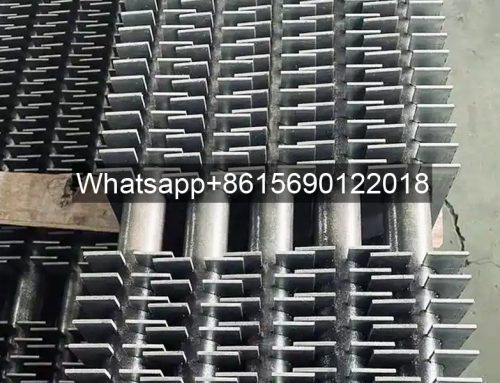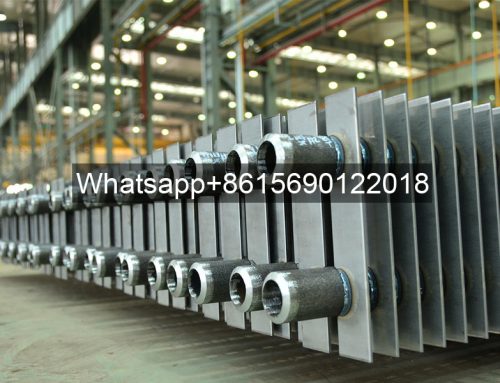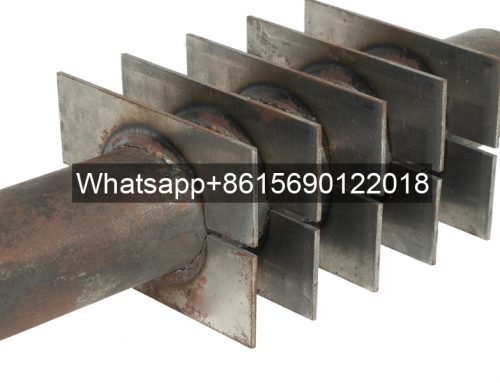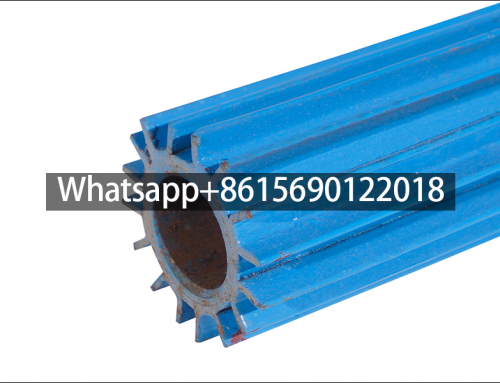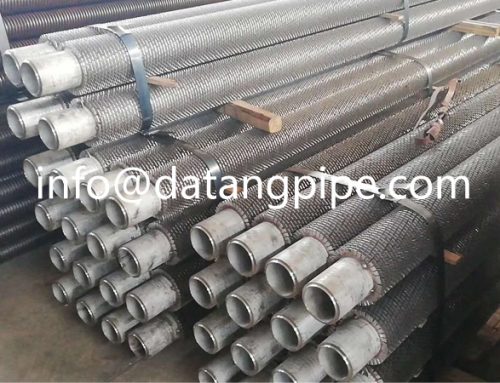Project Description

- Product Name: Premium Square Fin Tube for Boiler Economizer
- Leave Your Message
Premium Square Fin Tube for Boiler Economizer
Square fin tube is a fin tube material used for heat exchange, and the shape of the fin is square. The use of square fin tube can improve the heat transfer performance of the heat exchanger, because the shape of the fin can increase the contact area with the fluid, reduce the thermal resistance of the fluid, and thus improve the heat transfer efficiency.
Compared with other types of fin tubes, square fin tubes have higher strength and rigidity, so they are more suitable for use under high temperature and high pressure conditions. Square fin tubes are widely used in various types of heat exchangers, such as air conditioners, coolers and other fields.
What is a square fin tube?
Square fin tube is a heat exchange element that tightly combines the fins with the base tube through a high-frequency welding process, and is mainly used in the field of industrial heat exchange. Its base tube is usually made of seamless steel pipe, and the fins are fixed to the base tube by high-frequency welding. This structure makes the H-type fin tube have the characteristics of efficient heat conduction and corrosion resistance.
Structural characteristics of square fin tube
The base tube of the square fin tube is a seamless steel tube, and the material can be carbon steel or stainless steel. Carbon steel has a lower cost and is suitable for general industrial and civil environments; stainless steel is suitable for chemical, food processing and other fields with high corrosion resistance requirements due to its strong corrosion resistance. Fins are made of various materials, the most common of which are aluminum and copper. Aluminum fins are widely used because of their lightness and good thermal conductivity, while copper fins are suitable for high-end heat dissipation needs due to their excellent thermal conductivity.
Square fin tube application scenarios
Square fin tubes are widely used in various occasions requiring efficient heat exchange due to their efficient heat conduction and corrosion resistance.
For example, in chemical production, square fin tubes can resist the erosion of various corrosive chemical media and ensure the stability of the heat exchange process.
I. Base Tube Materials
- Carbon Steel
- Grades: ASTM A179, A192, A210, A106 Gr.B
- Max. Temp.: 400°C
- Stainless Steel
- Austenitic: 304, 304L, 316, 316L, 321
- Ferritic: 409, 430
- Max. Temp.: 650°C (dependent on grade)
- High-Alloy Steels
- Duplex: 2205 (S31803)
- Nickel Alloys: Inconel 625, Monel 400
- Non-Ferrous Metals
- Copper, Copper-Nickel (90/10, 70/30)
- Titanium Gr.2
II. Fin Materials
| Material | Compatibility | Max. Temp. | Key Feature |
|---|---|---|---|
| Carbon Steel | Weldable to carbon steel tubes | 480°C | Cost-effective |
| Stainless Steel | 409, 430, 304 | 650°C | Oxidation resistance |
| Aluminum | Bimetal w/steel base (extruded) | 280°C | High thermal conductivity |
| Alloy 625 | High-corrosion environments | 900°C | Acid resistance |
III. Standard Specifications
Base Tube Dimensions
| Parameter | Range |
|---|---|
| Outer Diameter | 25.4 mm – 114.3 mm (1″ – 4.5″) |
| Wall Thickness | 2.0 mm – 8.0 mm |
| Length | ≤ 18 m (custom lengths possible) |
Fin Specifications
| Parameter | Typical Range |
|---|---|
| Fin Height (H) | 12.7 mm – 25.4 mm (0.5″ – 1.0″) |
| Fin Thickness | 1.2 mm – 2.5 mm |
| Fin Spacing | 3.5 fins/inch – 8 fins/inch |
| Fin Geometry | Symmetrical “H” profile with center slit |
IV. Key Design Features
- H-Profile Advantage
- Central slit creates two parallel fins → doubles heat transfer edges
- Reduces ash/slug accumulation vs. solid fins
- Stabilizes fin roots against vibration fatigue
- Bimetal Option
- Aluminum fins extruded onto carbon steel tube → balances cost/performance
- Weld Integrity
- High-frequency resistance welding (HFRW) for carbon steel
- TIG/Laser welding for stainless/alloy tubes
V. Typical Applications
- Boiler Economizers (coal/biomass power plants)
- Waste Heat Recovery Units (cement/chemical industries)
- Flue Gas Desulfurization (FGD) Systems
- Catalytic Reforming Units (petrochemical refineries)
VI. Technical Notes
- Customization Options
- Anti-corrosion coatings (ETFE, aluminized)
- Serrated fin edges for enhanced turbulence
- Variable fin density along tube length
- Standards Compliance
- ASME Sec. I & VIII (pressure vessels)
- ISO 13705 (fired heaters)
- NACE MR0175 (sour service)
Note: Exact specifications vary by manufacturer. Design must balance thermal efficiency, pressure drop, and erosion resistance for specific operating conditions. For aggressive environments (e.g., coal flue gas), SS409 fins with carbon steel tubes are commonly specified due to cost-performance optimization.


